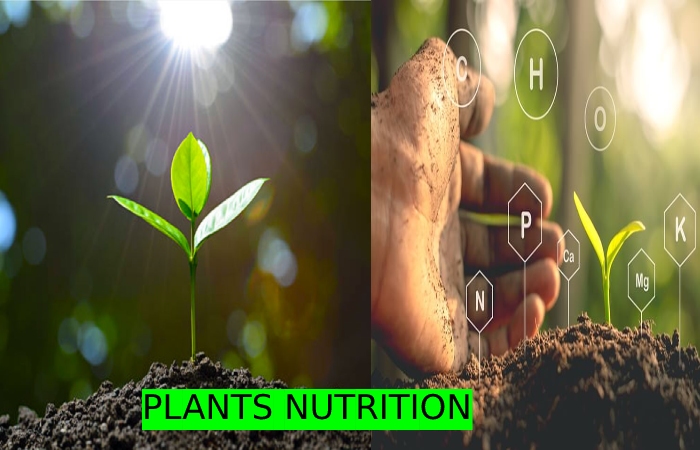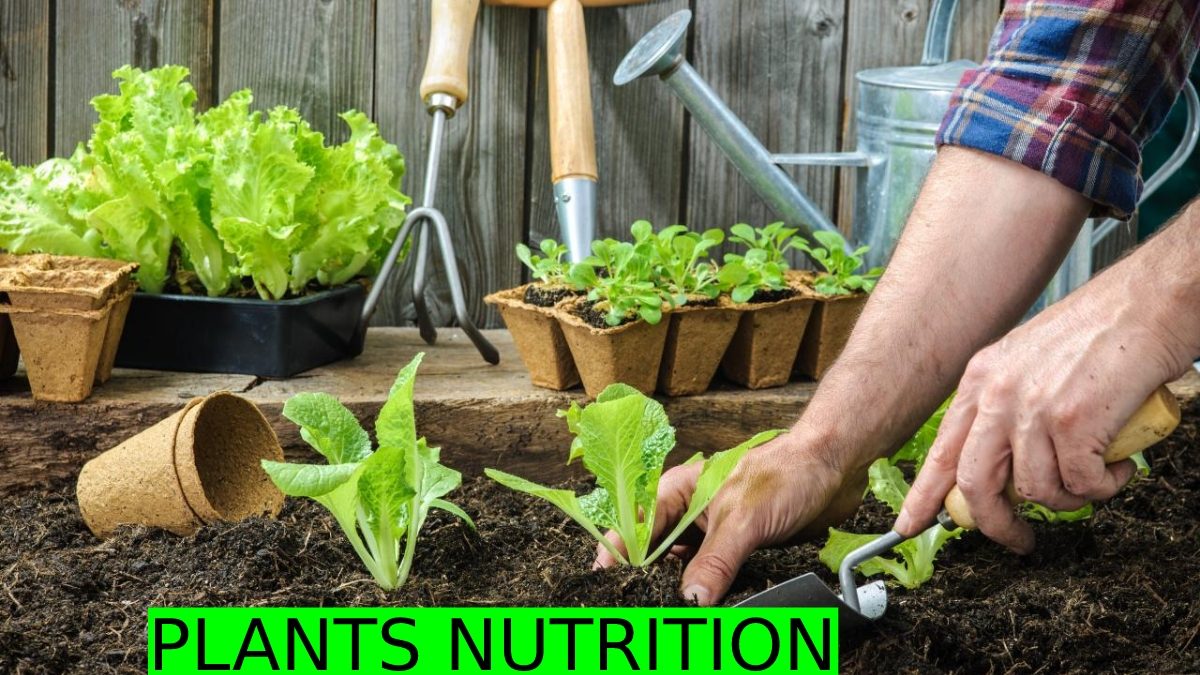Table of Contents
Plants Nutrition – Explaining – Plants Food
Plants Nutrition Every living organism needs some kind of energy and nutrient materials to ensure that the life processes go on smoothly. Moreover, this energy requirement is got from the food. You can understand this better in animals and human beings as you see it on a daily basis. You very well know what happens if you skip breakfast or lunch! But what about plants? Do they require any nutrition at all?
Plants and Their Nutrition Requirements
Plants are also living things that need some form of energy. They have cells and tissues. They also grow in size and girth. And they are the producers of the ecosystem. So, in order to synthesize food, they do have nutrient requirements. Of course, the kind of nutrient requirements varies.
This kind of nutrition in plants is called the autotrophic mode of nutrition. What does this actually mean? It means that plants have the special capability to make their own food, by using simple inorganic substances to produce organic molecules/substances. They get energy sources from non-living things such as the sun and carbon dioxide.
Plants also have chlorophyll in them, the green colour pigment. With the help of all these above factors, plants can produce simple carbohydrates. The carbohydrates thus produced are utilized by the plant and give it energy. When there is an excess of carbohydrates in the plants, then it is stored as a reserve for later use.
Types of Autotrophic Plants Nutrition
According to the type of energy source used, autotrophic nutrition in plants can be of two types. They are Photo-autotrophic nutrition and Chemo-autotrophic nutrition
The Process of Photosynthesis in Autotrophs/Plants Nutrition
To put it simply, plants require certain raw materials, in order to make their own food. These raw materials include carbon dioxide, water, and sunlight. Plants get water from the soil that enters through the roots. And sunlight is the source of energy. But how does carbon dioxide enter the plants? You should first understand that carbon dioxide is a gas.
You have learned in your earlier classes that plants have openings called stomata. Guard cells surround these stomata. These stomata are the openings through which carbon dioxide enters the plants. Gaseous exchange i.e. the exchange of carbon dioxide and oxygen in plants occurs through these stomatal openings.
Water is also lost through the transpiration process through these openings. And hence, when the carbon dioxide requirement is met for photosynthesis, plants close the stoma.
The above Equation shows the Chemical Reactions that Occur During Photosynthesis.
Chlorophyll is present in the structures of chloroplasts. They are disc-shaped organelles that are present in the mesophyll cells of the leaves. These help in trapping the sunlight within the plant. As the carbon dioxide enters the plant through the stoma, the light energy converts into chemical energy, by the splitting of the water molecules of the plants. Simple carbohydrates are produced in this process. Oxygen is a by-product of photosynthesis.
In this way, plants are able to take up simple inorganic substances and convert them into simple carbohydrates, to meet their nutrient requirements.
 Major Nutrients – Following Plants Nutrients Require in More Significant Quantities
Major Nutrients – Following Plants Nutrients Require in More Significant Quantities
Nitrogen (N)
Nitrogen is an essential element for plant growth and is found in many compounds. These include chlorophyll (the green pigment in plants), amino acids, proteins, nucleic acids, and organic acids.
In the deficiency of nitrogen, mature leaves turn yellowish. Read about 5 reasons your plants are turning yellowish.
Nitrogen sources: Ammonium nitrate, Calcium nitrate, Potassium nitrate, Nitric acid.
Phosphorus (P)
Phosphorus is in several energy transfer compounds in plants. An essential function for P is its role in nucleic acids, the building blocks of the genetic code material in plant cells.
The deficiency symptoms are somewhat similar to nitrogen deficiency. The leaves start turning yellow and fall off prematurely. Read about abundant uses of fallen leaves.
Phosphorus sources: Monopotassium phosphate, Phosphoric acid.
Potassium(K)
Potassium is an activator in many enzymatic reactions in the plant. Another role for K in plants occurs in special leaf cells, called guard cells, found around the stomata. Guard cell turgor controls the degree of opening of the stomata.
The mature leaves show yellow by the withering of leaf edges and tips are seen in potassium deficient plants.
Potassium sources: Potassium sulphate, Monopotassium phosphate, Potassium magnesium sulphate, Potassium nitrate, potassium chloride.
Magnesium
Magnesium plays a vital role in plant cells since it appears in the centre of the chlorophyll molecule. The certain enzymatic reaction requires Mg as a cofactor.
Yellow spots on old leaves appear in magnesium-deficient plants.
Magnesium sources: Magnesium sulphate, Potassium magnesium sulphate
Sulphur
Sulphur is a component of sulphur-containing amino acids such as methionine.
New leaves turn yellowish in sulphur deficiency.
Sulphur sources: Magnesium sulphate, Potassium magnesium sulphate, Sulphuric acid.
Calcium
Calcium requires calcium pectate, which is essential in cell wall development. Also, Cause is a cofactor of certain enzymatic reactions.
Growing points of plants damage and die off in a deficiency of calcium.
Calcium sources: Calcium nitrate, calcium chloride.
Add These Plants Nutrients to The Soil – Looking at Well-Balanced Fertilizers
One of the great things about the six essential nutrients is that they are easy to find.
Adding a well-balanced fertilizer is an easy way to increase nutrient levels in the soil. Be sure to check out Holganix’s fertilizer options including Holguin Blue Sky 21-0-0, Holguin and Holguin options.
Unlocking Nutrients in The Soil
Healthy soil pump with these nutrients. Although some like nitrogen and phosphorus are often Locke in an unusable form for the plant.
Plant and soil probiotics contain ACTIVE, beneficial microorganisms that unlock plant nutrients in the soil. They also nurture longer, more web-like root systems that are better able to mine for nutrients deeper in the soil.
Using Microbes to Improve Soil Health in Plants Nutrition
Every living organism needs some kind of energy and nutrient materials to ensure that the life processes go on smoothly.v
Holguin Bio 800+ charges soil with over 800 species of soil microbes to improve plant performance. What does that mean for you?
That means you build soil and root health, adding the benefits of better soil structure to whatever soil type you have. This translates to improved yield on crops, better playability on golf courses and a reduced need for fertilizers and pesticides on lawns.
Nutrition Important to Plants
Plants need nutrients for the same reasons that animals need them. They need them to germinate, grow, fight off diseases and pests and reproduce.
Like animals, nutrients need in larger, smaller or trace amounts for the plant to stay healthy. Lawn treatment experts such as Fort Worth landscapers know that lawns, being made of grasses. need nutrients that calibrate to keep them lush and green.
Some of the Plants Nutrients they Need Include
Nitrogen is necessary to create amino acids, which in turn make proteins. These are necessary for the growth of leaves and stems. Our Fort Worth lawn care experts know that nitrogen is especially important for grass.
What is interesting about nitrogen is though it makes up most of the air, it is unavailable to most plants save legumes, who have bacteria that fix it. However, plant food formulas often have a percentage of nitrogen in a form that the plant can use.
Primary Plants Nutrition
Phosphorus needs to help seeds germinate and for the growth of roots. This support of the root system is especially necessary for young plants and root vegetables such as carrots and beets.
The element needs to make DNA, RNA, phospholipids and ATP. or adenosine triphosphate, which carries energy to the plant cells and need for photosynthesis.
DNA contains the plant’s genetic code, and RNA carries instructions from the DNA from one part of the cell to another.
Phospholipids are fats that help make up the cell membrane. They’re made up of fatty acids, a glycerol unit, a polar molecule and a phosphate group.
Potassium is necessary for the creation of flowers and fruit. It also imparts disease resistance. It controls how water takes up in the roots and how it discharges through the leaves. Nitrogen need in plant respiration and photosynthesis.
Conclusion
Nutrition the entire process of taking in food and drink by living organisms and using it for the purpose of growth and daily activities is called Nutrition.
There are two major modes of nutrition:
Photosynthesis
Green plants actually make their own food through the process of photosynthesis. The mode of nutrition whereby a living organism makes its own food autotrophic nutrition. Organisms that are able to synthesize their own food are termed autotrophs
Also Read: Digital Marketing Trends – Meaning, Latest Trends, Topics, And More

